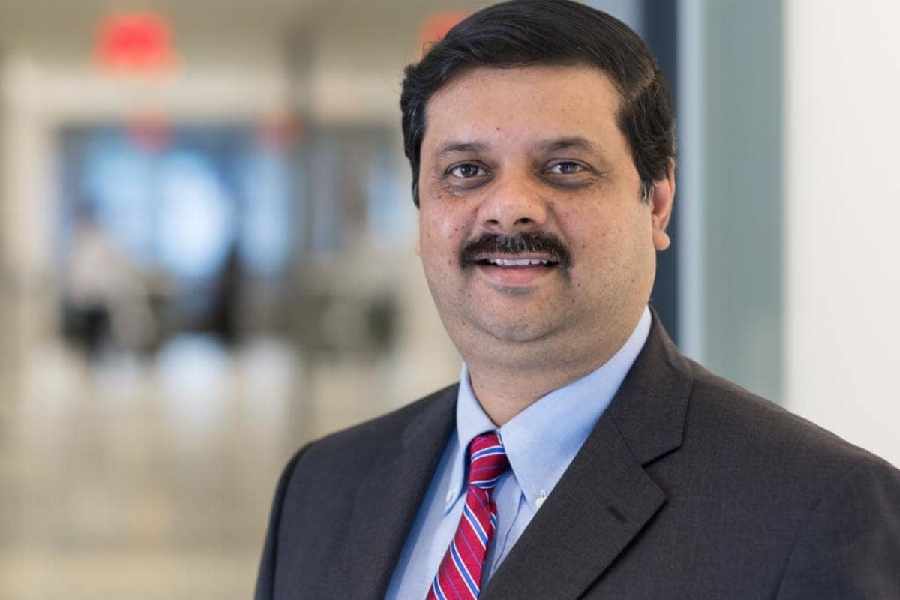Tata Steel’s decision to shut down blast furnace operation in the UK rendering 2,800 jobless has evoked strong reactions from the unions.
Koushik Chatterjee, executive director & CFO of Tata Steel, however, tells Sambit Saha of The Telegraph why it makes sense to close the blast furnaces and transition to an electric arc furnace, which can withstand the ups and downs of steel commodity cycles.
How would you analyse Tata Steel’s third quarter results both from India and the European operations? What’s the outlook for the next quarter?
In the backdrop of a challenging operating environment, we have increased our India margins by 400 basis points compared with the previous quarter. This is on the back of an increased spread and better controllable costs. The demand in India has remained steady but pricing has been more volatile due to international prices driven by Chinese exports.
European operations had a challenging quarter both in the UK and the Netherlands for multiple reasons.
The European market spreads were one of the lowest in recent times. Second, the UK business is being additionally impacted by the operating challenges in an end of life asset configuration, while the Netherlands blast furnace (BF) 6 reline took longer than expected due to many factors. Having said that, the market spreads in Europe are increasing recently and the blast furnace in the Netherlands is also restarting next week.
TSUK has proposed to serve UK customers during the transition to the electric arc furnace (EAF) in 2027 by importing semi-finished steels from India and the Netherlands. Will the intermediate stage be a profitable operation?
The current upstream steel making in Port Talbot has structurally higher costs that are not sustainable.
Sometimes merchant slabs are more competitive and in the transition period till we build the EAF, we will supply a mix of slabs and coils that will be more competitive than the costs currently. Hence economically it is a better option during the transition period and once the EAF is built, such an arrangement is not necessary. Hence our endeavour is to maintain a lean business through the transition and thereafter.
The management says that the EAF can potentially reverse years of losses. Will it be structurally strong to weather down cycles?
This is an important question you ask and I would like to address it on a fundamental basis. In the UK we have been structurally weak for decades in terms of cost competitiveness and in many ways the structural resilience to down cycle is weak.
In comparison, the new configuration of the EAF will use locally produced steel scrap and will be used for conversion to steel with local energy. This is a far more resilient business model that will be competitive, leaner and will have the ability to withstand global steel cycles, and even more if you factor in the increasing carbon costs that will be abated compared to the BF route.
Why did the company reject the union demand to run BF till the EAF comes up?
Let me put this in the right perspective. Post our announcement in September, we immediately engaged with the Steel Committee, which is the agreed multi union platform for such discussions. Even before the start of the legal formal consultation, we engaged deeply with the Steel Committee on our plan and for them to give any suggestions. Based on very intense engagement, the Steel Committee presented their endorsed plan to run one BF till the transition. We have evaluated this deeply but did not find feasible and affordable with much higher cash losses and higher capex and we have shared the analysis with the Steel Committee. Therefore, we couldn’t progress with the alternative plan but have committed to meaningfully consult on the transition in a fair and dignified manner.
How do you respond to the criticism that Tata Steel is closing blast furnaces in the UK on account of the environment while building new ones in India?
Good that you have asked this question and let me explain the context and the economics of steel across geographies.
The UK is a matured market in terms of volume growth in the near future. The cost structure in Port Talbot Works with the current configuration is structurally high with imported raw materials and legacy costs. The carbon costs are getting unaffordable and the heavy end in Port Talbot, including the coke ovens, has come to the end of life. Hence there is no business case to continue the BFs in the UK.
Our argument for the UK is actually to accelerate the transition to a proven decarbonised technology like the EAF with domestic scrap sourcing to make it very competitive.
The scenario in India is very different as it is a growing market. There is a longer transition planned as a country.
The carbon regulations and costs will come in a phased manner. India is not yet in the scrap maturity phase and doesn’t have enough to supply in scale and it is endowed with efficient factors of production, be it availability of iron ore or skilled labour force for the industry. Hence building efficient BFs with state-of-the art technology with high productivity will be the path for the next decade till alternative fuels are economically available at scale.
Let me turn to India. When can one expect the 5 MT additional capacity to kick in?
As we speak we are actually commissioning the Kalinganagar expansion in a phased manner. The 6 million per annum pellet plant, the cold rolling mill and the second caster are all in the start-up phase. The second BF, which is one of the largest in the world, will also be commissioned this calendar year.










